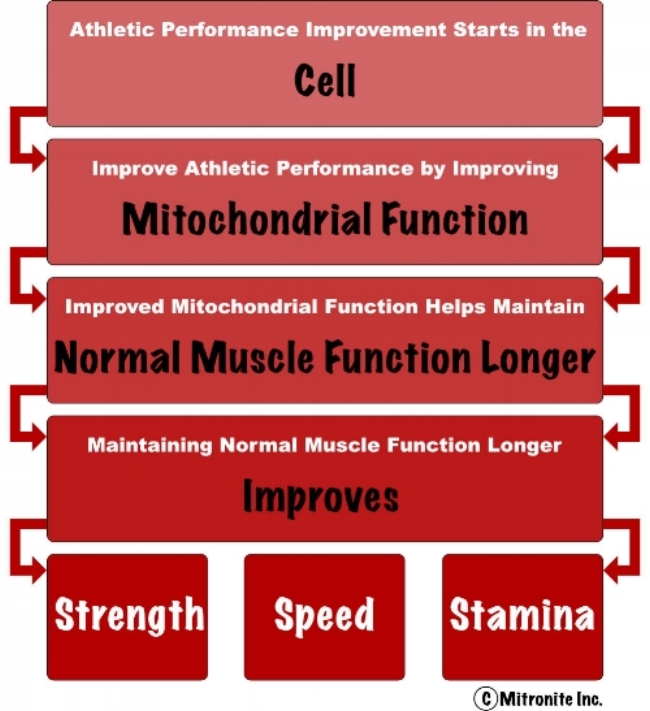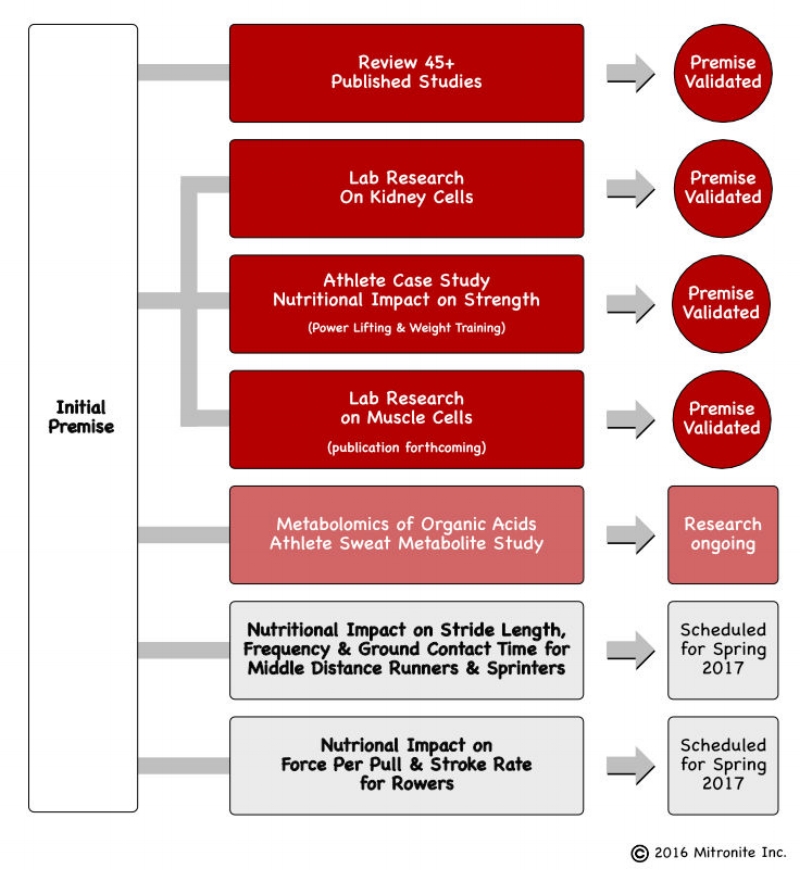Do you want to know how to maintain
fresh peak performing muscle longer?
What about how to increase
power output? strength? stamina?
Or would you rather know
how to shorten exercise recovery?
We want to know too.
Hear is what we are doing about it.
We are researching how to improve metabolic and mitochondrial function in a way no-one has ever done before. Metabolic studies aimed at improved athletic performance often use blood tests, or muscle or skin biopsies for analysis. But these techniques, while valid, are time consuming, expensive, and invasive. They also require significant processing to filter out interfering substances. This can slow the research down, increase the complexity, and limit the number of study participants. We are changing all that.
Got Sweat? Then Listen Carefully.
Sweat contains metabolites which can reveal what is happening in our cells and our mitochondria. We going to analyze the metabolites in human sweat rather than rely on blood or biopsies. We are seeking to clarify how to best support the body's natural production of energy and recovery promoting compounds. Here are the technical details:
Sweat for Science:
The Metabolomics of Organic Acids
in Human Sweat During Exercise
Study Purpose:
The cellular redox state is directly reflected in the ratio of the organic acids, lactate and pyruvate. The lactate-to-pyruvate ratio directly correlates to the concentrations of NAD+:NADH in the cytosolic and mitochondrial compartments of the cell. Directly important to this study is the observation that the lactate to pyruvate ratio in human sweat is closely correlated to that of serum.
Sweat, an easily obtained, noninvasive, non-infectious bodily fluid enables a simplified collection protocol for the assessment of lactate, pyruvate and the lactate:pyruvate ratio in athletes and controls pre-, during, and post-exercise. The lactate-to-pyruvate ratio thus obtained will enable an indirect assessment of the cellular redox state which in turn reflects mitochondrial performance and the efficiency of aerobic metabolism.
The main goal of the study will be to assess whether the lactate and pyruvate concentrations of human sweat can be determined enzymatically using in-house developed and optimized biochemical protocols and accurately determine the lactate:pyruvate ratio. This initial study would simply collect sweat from participants, offering informed consent, and measure lactate and pyruvate levels by enzymatic means. The same sample could be further utilized to assess a more comprehensive metabolic profile of organic acids by a gas (or liquid) chromatographic - mass spectrometry procedures.
Following the initial feasibility assessment, we will test various nutritional interventions to determine effectiveness.
Study participants will include athletically able, male and female subjects who offer informed consent, or who provide written informed consent for minors participating in the study.
Principal Scientists
Our research is led by scientists Dr. Frank Merante and Dr. David Guevara, specialists in metabolomics.
Dr. Frank Merante, Molecular Biologist, Mitochondrial & DNA Specialist
Dr. David Guevara, in the lab at Seneca college
Improved Mitochondrial Function
Supports Improved Athletic Performance
This is generally accepted to be true in the case of exercise induced mitochondrial improvement. Aerobic training and exercise is known to support improved mitochondrial function. The same is true for resistance training. Mitochondria undergo changes as a kind of adaptive response:
- They can become more efficient
- They can increase in number
- They can become larger
Our premise is improved mitochondrial function derived from nutritional interventions. We proposed supplying the body with nutrients in the form of metabolic intermediates which would have a near immediate positive benefit for mitochondrial function.
Completed Research Suggests
We Are On The Right Track.
We use a variety of research approaches including:
- Regular review of the published literature,
- Laboratory research,
- Field research with athletes and coaches,
- Partnering with complimentary organizations, and
- Publishing where applicable.
The following is our current research roadmap into improved mitochondrial function to support improved athletic performance.
Our Collaboration with the Seneca College School of Biological Sciences & Applied Chemistry
Seneca College is an ideal collaboration partner for us. They are unique because of their skillset in rapid cycle-time, applied innovation. With experienced faculty and well equipped laboratory environments, Seneca can produce quick, meaningful results - precisely the things you want from a collaboration like this.
What Are The Current Research Findings?
- Mitronite does appear to support significantly improved mitochondrial function.
- Mitronite does appear to support maintaining normal muscle function longer under intense exercise or competition.
- Mitonite does appear to significantly shorten recovery time. This appears to be the case between sets as well as between workouts.
- Mitronite does appear to support significant improvements of strength, speed, and stamina of between 9 and 21%.
- Mitronite appears to work almost immediately. The capsule disintegration time is approximately 15 minutes and it appears to take approximately 5 minutes post disintegration to reach your cells. This means when taken on empty stomach, it appears to take approximately 20 minutes to take effect.
Mitronite is a natural food product. It is licensed by Health Canada as a schedule 1 vitamin (the safest category). It is not a drug, contains no banned substances by any major sports federation. It has no stimulants and it does not create a "high" or "buzz" and there is no "crash."
Curious about Mitronite?
We invite you to:
- Use Mitronite,
- Tell us about your experience,
- Join our research, or
- Collaborate with us











